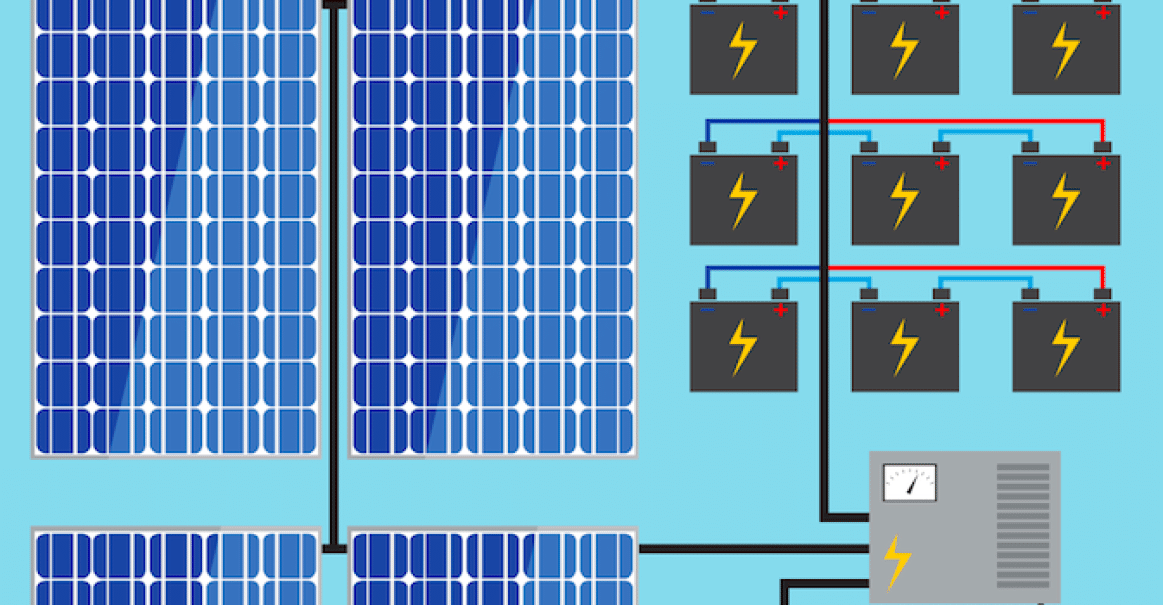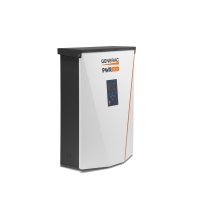
Solar PV and energy storage are increasingly mentioned in the same breath. Falling costs paired with new revenue streams available to residential and commercial owners is driving storage deployments to new highs. Although many of these solar + storage systems are new deployments a significant opportunity for warm leads lies in customers that already have PV installed at their home or business. This article will cover the basic principles of adding energy storage to an existing PV system.
System Design
Solar + storage systems fall into two buckets; AC coupled and DC coupled. In DC coupled system current flows from the module strings to a hybrid inverter or charge controller then to the batteries for charging. When power from the batteries is needed the hybrid inverter or battery-based inverters converts the DC current to AC for use in the home or business. For a customer with an existing PV system DC coupling is usually not a good option. Converting to a DC coupled system could require substantial rewiring (both on and off the roof) and deem the existing PV inverter worthless.
Instead, contractors should persuade their existing PV customers to consider an AC coupled solution should they opt to add storage. In doing so the PV inverter remains within the system to send AC current from the PV to the battery based inverter (as can be seen in the block diagram above). By preserving the PV inverter wiring on the roof can be left alone and the remainder of the installation can be limited to the utility room or point of interconnection.
For a more in depth comparison of AC and DC coupling see our article HERE.
Installation
Most existing PV system are tied into the main service panel of the building. In some instances the point of interconnection is on a subpanel or a load-side connection of the service conductors. Whatever the case, to retrofit an AC coupled storage system, the PV inverter must be installed such that it is isolated from the grid during an outage by the battery based inverter. To do so, a critical loads panel is added to the facility where the PV inverter is interconnected. This panel will also contain the loads to be backed up in the event of a grid outage.
Other configurations using the main service panel as the common panel are also possible with the use of an automatic transfer switch.
Choosing a Battery Based Inverter
If the retrofitted AC coupled storage system is to be operational in a grid backup mode, it is important to ensure the PV inverter and battery inverter communicate effectively. If they do not, the PV system could overcharge the batteries during a grid outage when local loads are minimal. To ensure optimal operation be sure the PV inverter is capable of frequency shifting curtailment or Sunspec compliant.
Investment Tax Credit
For information on the tax incentives available to storage systems see our previous article HERE. Relevant to the discussion of a retrofit, a storage system installed in conjunction with an existing PV system can qualify for the 30% ITC if charging is performed by the solar system. Contact your Greentech Renewables account manager for assistance designing a retrofit storage system.


Comments
Since this article was published, so much has changed. Covid-19 pushed solar PV installation companies into the "online" predesign and bid cost process. Cutting overhead, cuts system costs and allows more money towards a solar PV system than previously.
New incremental efficiency increases in silicon solar PV cells and panels up into the 23% to 25% efficiency. Top Con type N is the new buzz word. Perovskites using tandem or even multiple layers of "band gap" chemistries have been combined to make solar PV cells that can harvest up to 47% of the sunlight impinging upon the panels each day.
Larger companies are buying out smaller well established energy storage concerns like when GENERAC bought out established Pika and recently Briggs and Stratton bought out Simpliphi that will bring a larger nationwide distributorship under the GENERAC and Briggs and Stratton names. More and more of these companies are adding features to their product offerings to add energy command and control, resiliency and with grid interactive systems the ability to "island" critical circuits in one's home for days, weeks, maybe even months at a time. The buzz word now is fast becoming micro-grid and self resiliency. As battery pack prices continue to decline, the residential solar PV with smart energy storage will be able to create the interactive micro-grid for the home to make the micro-grid primary energy for the home and allow the system to be built large enough to run the home (most of the time) off of solar PV and become grid agnostic. Sooner or later "grid agnostic" will become the 'new' buzzword.
Thank you for your insight. It really is an exciting time for the solar and storage industry.